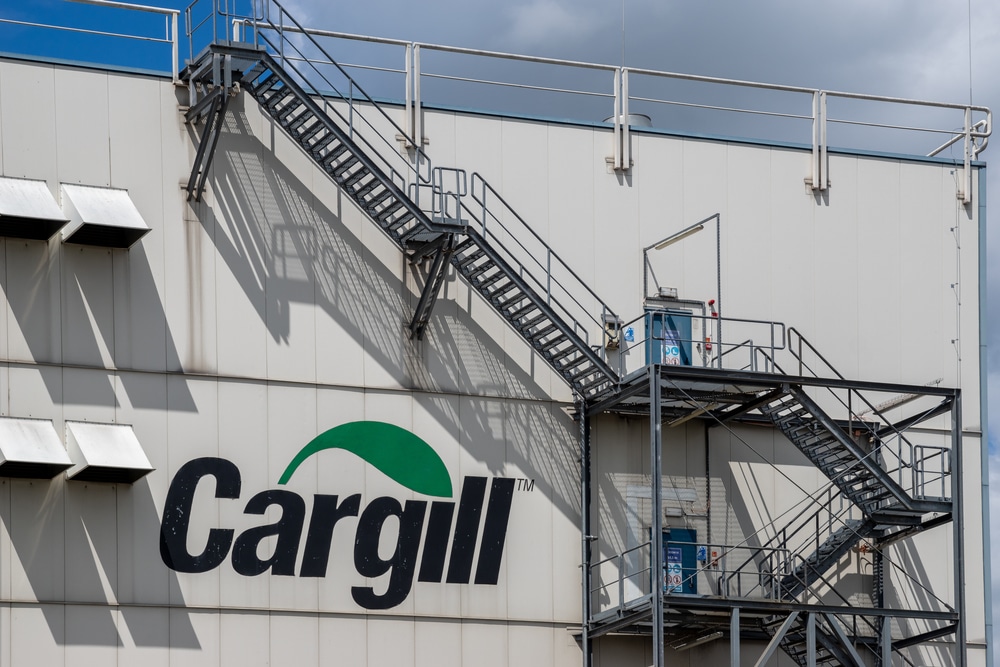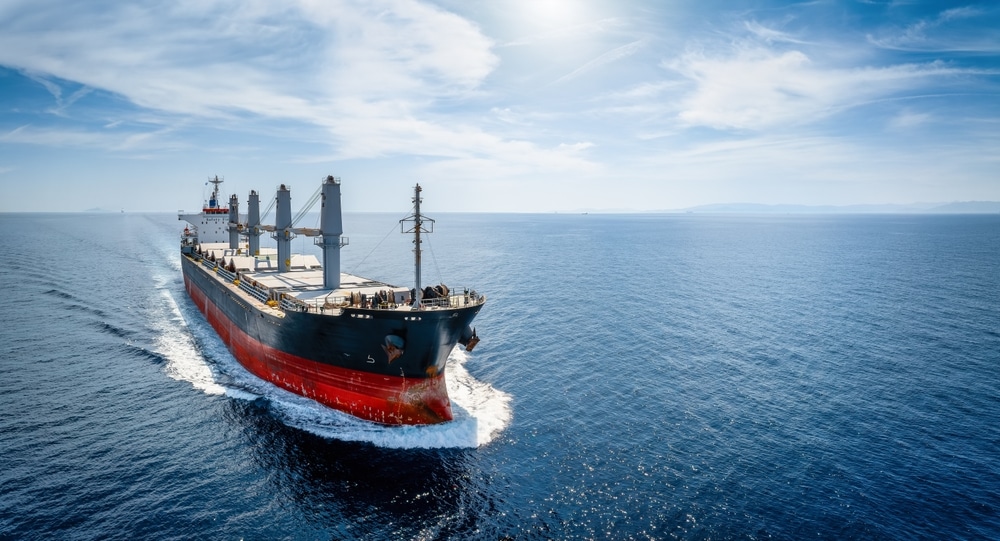America’s largest private company and world’s largest agricultural shipping firm, Cargill, has made its maiden voyage using special sails powered partly by the wind. The goal is to study how wind power can help reduce energy use and carbon emissions of cargo ship and the entire sector.
Cargill is hauling 225 million tons of dry bulk cargo around the world each year on over six hundred vessels. One of these cargo ships is retrofitted with WindWings sails designed to cut fuel use, and thus, shipping’s carbon emissions.
Harnessing Wind Power to Decarbonize Shipping
The maritime industry currently accounts for almost 3% of global carbon emissions largely because of its reliance on carbon-intensive bunkers. And over 80% of the global merchandise trade by volume is shipped by sea.
According to the International Maritime Organization, the industry is producing over 830 million tonnes of carbon each year. That’s equal to spewing as much CO2 as 283 coal-fired power plants do in a year.
The industry faces pressure from environmentalists and investors to accelerate decarbonization. As such, major players have been exploring some ways to shift away from dirtier fuels to cleaner power sources. And Cargill finds renewable wind power a promising option to explore.
One of the commodity giant’s chartered massive cargo ships, 80,000-ton Pyxis Ocean just sailed from China to Brazil using two gigantic sails called WindWings. The ship is owned by Mitsubishi Corporation’s shipping arm while creating the revolutionary sails is also funded by the European Union.
The pioneering wind-powered carrier is the world’s first to be retrofitted with two 37.5 meters or 123-foot high sails. When the vessel is in port, the wings, made from the same material as wind turbines, fold down and open out when in open water.
 The enormous wings can reduce the ship’s fuel consumption by about ⅕, according to its designer BAR Technologies. This maiden sail is an opportunity for Cargill to see if returning to the traditional way of moving ships would be the way forward for transporting goods at sea.
The enormous wings can reduce the ship’s fuel consumption by about ⅕, according to its designer BAR Technologies. This maiden sail is an opportunity for Cargill to see if returning to the traditional way of moving ships would be the way forward for transporting goods at sea.
If the test becomes a success, the charterer will install WindWings to ten more ships. After all, “wind is there for free”, as Cargill’s ocean transportation president Jan Dieleman says. He further added that there’s no silver bullet to decarbonize the industry but believes that wind-assisted propulsion technology can help.
Wind-Powered Sails Are Making a Comeback
Sailing through the wind has been the way of moving things and people until powerful fossil fuel-powered ships took over. Now, wind-powered shipping is making a comeback, though not that fast.
Pyxis Ocean joins a tiny fleet of only 2 dozen large commercial ships run by some form of wind-assisted propulsion. For more than 110,000 new-build order vessels, only below 100 feature wind-assisted technology currently.
But if more ship owners, operators, and charterers choose to also use renewable energy to fuel their fleet, it can make a huge difference in cleaning up the dirty shipping industry.
For America’s largest private firm by revenue, the groundbreaking technology can help reduce emissions and decarbonize bulk cargo by 30%. The company also claimed that installing WindWings is possible for both existing cargo ships and new constructions.
According to Yara Marine Technologies, the company that produced the sails, giant crude carriers can install up to six WindWings. That means more fuel and carbon emission savings.
If the vessel is powered by a clean fuel (e.g. green methanol), the sails can drive down costs. If the cargo ship is burning fossil fuels, wind power can reduce carbon emissions.
Here’s the estimated fuel savings of installing WindWing as per BAR Technologies:
- 1 WindWing sail can save 1.5 tons of oil-derived fuel per day on an average route
- 2 WindWing sails like the Pyxis Ocean can save 1,095 tons a year (20% of what a Kamsarmax vessel consumes each year)
- Installing 3 WindWing sails on Kamsarmax ship can save about 30 tons on fuel
Saving 1 ton of marine fossil fuel use is equivalent to reducing about 3 tons of carbon dioxide emissions.
These savings on CO2 emissions is critical as the global shipping industry has to meet its ambitious targets. And same with the rest of the industries, it has to reach net zero emissions by 2050.
Other parts of the sector have been using innovative technologies on their ship to help cut down carbon emissions.
In June, a Norwegian cruise line made headlines by sailing the world’s most energy-efficient and first zero emission cruise ship. It’s also harnessing the power of the wind, plus the sun with its solar panel-covered retractable sails. Other efforts focus on ammonia and hydrogen for clean shipping.
While wind-assisted propulsion technology won’t make a huge impact right now in cleaning up the sector, it’s gaining some traction. BAR Technologies and Yara Marine have another project to install WindWing sails on a different vessel.
Cargill’s groundbreaking move is to help their partners in the maritime industry transition to a more sustainable future. As Dieleman remarked,
“We’re always used to going the shortest way… Now, you might want to go the way where there’s more wind.”

